Radar on ships and their purpose
Before the invention of Radar on ships, the navigation was done visually. Which had many drawbacks, like it was very difficult to navigate in reduced visibility or any other reason due to which we could not detect the target.
Which resulted in many collisions at sea during the poor visibility. The radar in marine industry was a boon to the mariners as it assists the navigator in any condition of weather, traffic conditions and visibility.
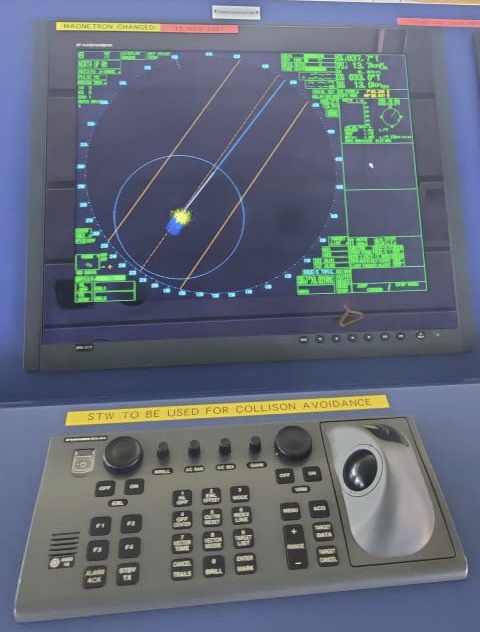
Thus the Radar and then the ARPA were invented to assist the mariners for the ease of navigation. The first radar was used on British and the US fleets in 1942.
The purpose of the Radar on ships is to locate other vessels and landmasses so that the navigator can determine their position, speed, and distance from them.
They are electronic navigation tools that make a picture of the area around the ship by using a rotating antenna, which sweeps a narrow beam of microwaves over the water surface around the ship and to the horizon. As these beams strikes a target and return back, then the target is plotted on the screen of a radar.
The use of radar is crucial to maritime and coastal safety. The ability to steer a ship in the harshest weather and “blind” when visibility is low at night or due to terrible weather is an absolute necessity for captains.
Ship-based marine radars aren’t the only tools harbormasters and the coast guard use to keep an eye on ship traffic. they also use shore-based vessel traffic service radar systems.
It is uncommon for radars to be employed solely in the marine environment. Radar and other navigational displays are increasingly being combined onto a single screen as having to constantly switch between them might be annoying.
As a result, the radar display can often be superimposed with a sonar display and an electronic GPS navigation chart of the ship’s position. This gives us a broader perspective from which to steer the ship.
Table of contents
- Use of Radar on ships
- Basic principle of operation
- Components of a Radar
- Types of Radar
- Range measurement by ship’s radar
Use of RADAR on ships
For water-filled obstacles that are poor radar targets, High Speed Craft use a modified version of standard marine radar in addition to night-vision infrared optical sensors.
Small commercial and fishing boats employ clutter returns to keep a watch on the weather and locate the buoys used to mark their nets. They also keep tabs on the movements of other boats in the area, hope to spot flocks of birds feasting on fish, and possibly detect individual birds.
The radar aboard a Leisure Craft is used for a variety of purposes, including avoiding obstacles, keeping tabs on the position of rivals during races, and spotting turbulence in the sea or in the sky so that the crew can head for calmer waters, clearer skies, or a more favorable wind direction.
Radar is used by commercial ships to survey the surrounding area for traffic, track the position of other vessels to avoid collisions, scan for ice, uncharted wrecks or other obstructions, keep an anchor watch, small boats (wood and fibreglass boats are not a good reflector so it may or ma not reflect in radar.
Vessel Traffic Services use radars keep an eye on the seas, confirm moves and positions reported over the radio or by the radio-based automatic identification system (AIS; installed on all ships over 300 gross tons as of December 31, 2004), and keep track of any important targets in the area being watched.
Radars are used in military to keep an eye on coastal gunnery and missile-firing ranges for safety. They are also being used more and more by the coast guard and gendarmerie to stop drugs, smugglers, and pirates.
Basic principle of operation
The radio detection and ranging radar (RADAR) system is based on electromagnetic sensing technology. The radar emits radio waves into outer space. Refractory materials will attenuate some of the radio waves (targets).
When radio waves are received and sent toward a target, many of the echoes bounce off the surface in different directions. It is possible to receive and amplify some of the reflected radio waves by directing them back toward the radar.
The presence or absence of an echo from a predetermined target is determined with the help of signal processing. The reflected signal can be used to determine the target’s location and other details.
Components of Radar on ships
The majority of the radar system consists of the following components.
Antenna Unit (Antenna + Motor): Antenna that emits electromagnetic waves and Motor that rotates the Antenna.
Transceiver Unit: Unit responsible for generating waves and signal processing
Processing Unit: Unit that processes radar component and external device signals.
Display Unit: Display of the radar display and sensor data
Control Unit: Radar controls
Types of Radar on ships
There are two main types of radar, which can be told apart by the signals they use.
Continuous Wave Radar
Specifically, the Frequency Modulated Continuous Wave (FMCW) radar is a type of continuous wave radar that employs frequency modulation. It is sometimes referred to as CWFM Radar, which stands for Continuous Wave Frequency Modulated Radar.
One antenna is utilized for transmission, while the other is used for reception with this sort of radar on ships. Distance and velocity may be calculated with this radar.
This radar provides a precise evaluation of the target’s relative velocity. Therefore, these are typically employed in contexts where the disclosed velocity is of greater significance than the distance covered.
To put it simply, merchant ships can’t match the top speeds of other types of transport. Therefore, determining the target’s distance is crucial for avoiding accidental impacts.
Pulse Radar
A pulse-based radar designed to spot moving targets is known as a Moving Target Indication Radar, or MTI Radar for short. It employs a duplexer to allow a single antenna to act as both a transmitter and a receiver.
The Doppler effect theory is at the heart of the MTI radar’s ability to differentiate between moving and still targets.
Pulse radars are often used on commercial(merchant) ships because they are cheaper to install and run, and their antennas take up less space.
Though there are various types of radars. But we only find the X-Band and the S-Band radar on ships. Which are pulse radars only.
The only thing is the frequency and the wavelength on which they operate is different.
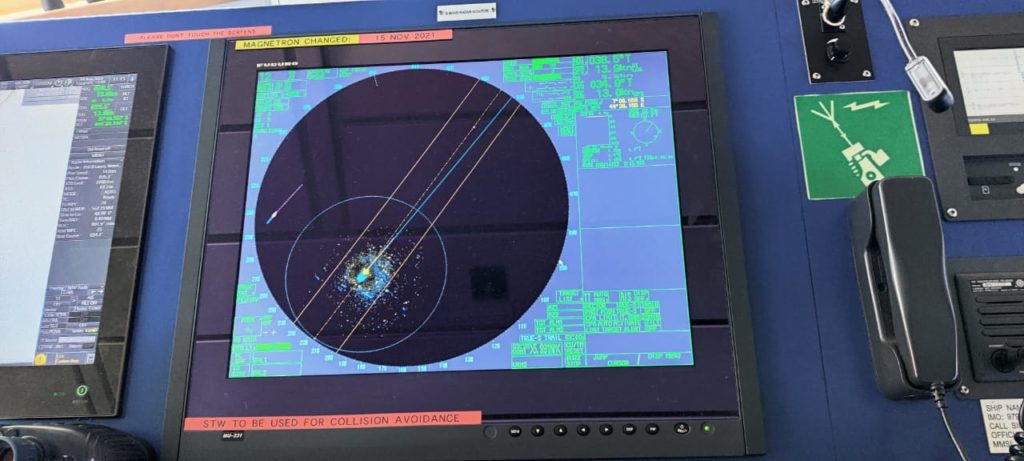
So let’s get to know about the X-Band and the S-Band radars.
S-Band radar
Several hydrometeorological and navigational uses for radar systems require observations to be obtained in wet and stormy conditions.
In extreme weather, accurate and dependable observations are made possible by using S-band radars. The microwave frequencies in the electromagnetic spectrum between 2 GHz and 4 GHz are used by S-band radars. Radars operating in the S-band give estimates with fine temporal and geographical details.
S-band radar provides a broad perspective, assisting in advance planning by meteorologists and engineers in extreme weather.
Due to their high radiated power, S-band radar systems are able to cover large areas of land and sea. S-band radars are often used as commercially available long-range weather radars because they have low attenuation.
X-Band radar
Most large research vessels and numerous offshore sites are equipped with X-band radars. Navigation and traffic control on the high seas were their original purpose.
But by including some extra hardware and software, X-band radars may be used to measure waves and currents.
The electromagnetic spectrum’s X-band spans 8–12 GHz and a wavelength of roughly 3 cm, making it part of the microwave radio region.
Marine radars can pick up not only ships and land features in the sea but also surface reflections, or “sea clutter,” in their images.
The ocean surface can be scanned in real time by X-band radar systems from a distance of a few kilometers with temporal and spatial resolution high enough to resolve individual waves.
This means that several square kilometers of ocean surface can be tracked in real time. Offshore or near the coast, X-band radar systems can be put on moving ships or platforms that stay still
Range measurement for a Radar on ships
Determining the range of a radar system is harder because of things like the pulse duration and how the microwave signal is processed, the shape of the shadowed area under the beam pulse, and the purposeful suppression of excess electrical noise close to the radar.
The right range scales should be used based on the current situation and the characteristics of the ship’s environment.
Range
The range, denoted by the symbol “R,” is the distance between the radar and the target. Obviously, the radar sends out a signal, and the target responds by sending back an echo at the speed of light, C.
Let’s call the time it takes for the radar’s signal to get to the target and return to the radar T. Since R is the distance between the radar and the target, 2R is the total round-trip distance (from the radar to the target and back from the target to the radar).
Applying the following formula, one may determine the range.
R= C*T/2
R denotes the target’s range.
“C” = speed of the light
The Maximum Unambiguous Range
We know that at each tick of the clock, radar signals should be broadcast.
The echo signal that corresponds to the current clock pulse will be received after the next clock pulse if the interval between them is short enough.
This causes the target’s apparent range to be lower than its true range.
It is therefore necessary to choose the interval between clock pulses in such a way that the echo signal corresponding to the current clock pulse is received before the next clock pulse begins.
We will then have the greatest unambiguous range of the target, which is the same as the true range of the target.
With this formula, we may get the target’s maximum determinable range:
R= C/2Fp
R = Range of the target
“C” = Speed of the light
Tp as the reciprocal of pulse repetition frequency (Fp)
Minimum Range
When we use the time it takes for the echo signal to be received at the radar after the signal has been transmitted from the radar as the pulse width.
We may calculate the minimum range of the target. It’s also the closest you can get to the target.
Substitute, R = Rmin and T = t.
Rmin = C*t/2 Rmin
Rmin stands for “Minimum Range”.
The Standard Form of the Radar Range Equation
If the echo signal’s strength is less than the minimum detectable signal, the radar will be unable to pick up the target because it is outside of the farthest possible range.
Accordingly, when the received echo signal’s power is equal to that of the minimum detectable signal, we may conclude that the target’s range is considered to be its maximum range. This leads us to the following equation:
RMax=[(PtGσAe)/(4π)2Smin]1/4
The above equation, which is the traditional form of radar range, can be used to figure out how far away a target is.
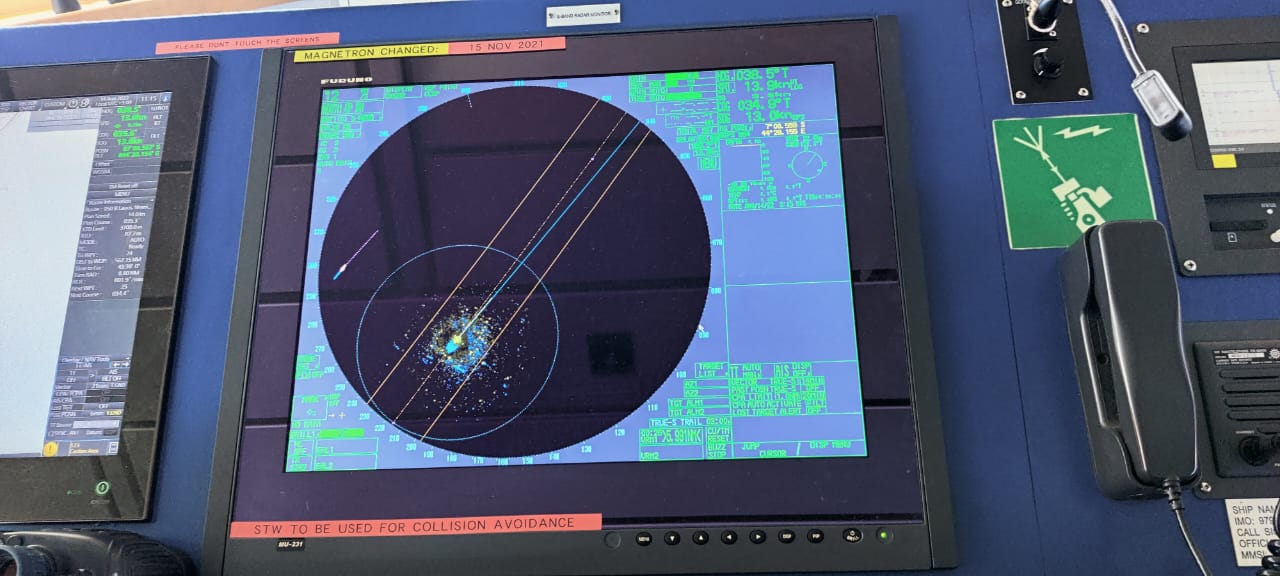
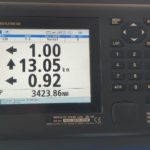
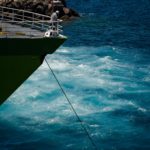
Pingback: 15 Essential Bridge equipments on a merchant ship - BloggingSailor